Electrical Engineering (2nd)
These projects are at the endpoint of a two-semester sequence. They are functionally complete.
E2.01 Dual-Use Wideband Microphone Array System

Sponsor: NASA TSGC
Student Team: Nicholas El-Takach, Nicholas Garrard, Olivia Salazar-Mendez, Jessie Smith, and Mason Huebner
Faculty Advisor: Dr. Richard Compeau
Our team will be building a proof-of-concept prototype dual-use omnidirectional wideband micro-electromechanical system (MEMS) microphone array that will detect human vocal range (200Hz - 6kHz), relay the detected vocal message over a speaker, and identify ultrasonic frequencies (>20kHz) that indicate anomalies such as air leaks. If an ultrasonic sound is detected, the product prioritizes it over a voice and will alert personnel with an audio alarm that can be disabled manually by the user. A visual alarm will also be triggered by the detection of the ultrasonic frequency.
E2.03 Team Waveguide

Sponsor: Dr. Rich Compeau
Student Team: Anurag Kumar, Sarah Picas, Matthew Bistricer, Dylan Woody, Brody Mills, Cole Knapek, Josue Garcia, Vahid Jalaliani
Faculty Advisor: Dr. Karl Stephan & Dr. Harold Stern
Our project is a feasibility study that examines the practical ability to replicate the performance of commercially available X-Band waveguide components through 3D printing and electroplating. In the project, we are replicating a straight waveguide section, waveguide bulkhead adapter, coax-to-waveguide adapter, low-gain horn antenna, and high-gain horn antenna. We are using these components because we have access to commercial versions of them. We are measuring the performance of the replicated components by measuring their insertion loss and the VSWR, or by checking whether they can wirelessly transmit information. This is important because waveguide components are expensive, making them difficult to obtain. If the process proves to be feasible, creating waveguide components through 3D printing and electroplating could be a more cost-effective way to obtain these components.
E2.04 Automated Pet Feeder
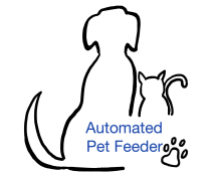
Sponsor: Diane Welker
Student Team: Nicolas Briggs, Barton Maupin, Victoria Ticheli, Rosemary Perez
Faculty Advisor: Mr. Mark Welker
The automated pet feeder will allow users to feed up to four pets, whether they are home or away from home. It's designed to allow at least two pets to eat simultaneously and it guarantees to have a pet's specific food and its correct portion size. This guarantee is accomplished by using image recognition, setting time limits and other safeguards to prevent a registered pet from overeating. While it is designed to automate the feeding times, a user will always be up-to-date on a pet's feeding routine and any possible errors that may arise.
E2.05 The Drifter
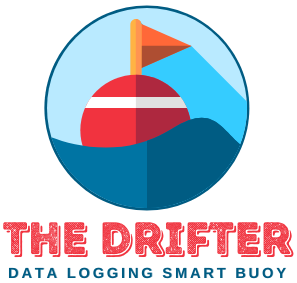
Sponsor: Andrea Wenzel
Student Team: Jacob Smith, Amber Ferguson, Rod Michael, Rodolfo Montero
Faculty Advisor: Mr. Lee Hinkle
The Drifter is a low-maintenance, low-cost datalogging smart buoy. The system will be powered through a solar panel, with a rechargeable backup battery for night cycles and less than ideal weather. It will log various water quality metrics and store the data locally on a microSD card and display the current readings on an e-Ink display on top of the enclosure. The user can access this data wirelessly using Bluetooth or Long-Range Signals without ever having to remove The Drifter from the water.
E2.06 Child Awareness and Protection System

Sponsor: Texas State University & Mr. Lee Hinkle
Student Team: Ayad Brkhesh, Will Sampson, Brent Gardner, Alec Harris
Faculty Advisor: Dr. Semih Aslan
According to NHTSA, "In 2020, during the public health emergency, 25 children lost their lives in hot cars, and in 2021, 23 children have died." CAPS prevents these tragedies using multiple sensors, auditory and visual alarms. In recent years, newer vehicles have implemented systems to prevent children from overheating in vehicles yet they are too expensive for the general population. Our system is a low cost, effective child detection system that keeps parents minds at ease by ensuring the safety of their young children.
E2.07 Robo-Car A

Sponsor: Mr. Jeff Stevens
Student Team: David Cornejo, Rehana Ahmed, Eduardo Alonso, Cristian Rodriguez
Faculty Advisor: Dr. William Stapleton
Our product is an autonomous vehicle that is built and coded to accomplish three challenges: Block Push Challenge; pushing a randomly placed block out of a sumo ring, Hallway Traversal Challenge; successfully traverse a designated hallway, and the Sumo-Bot Tournament; round robin tournament with standard unified Sumo-Bot rules.
E2.08 Autonomous Sumo Bot
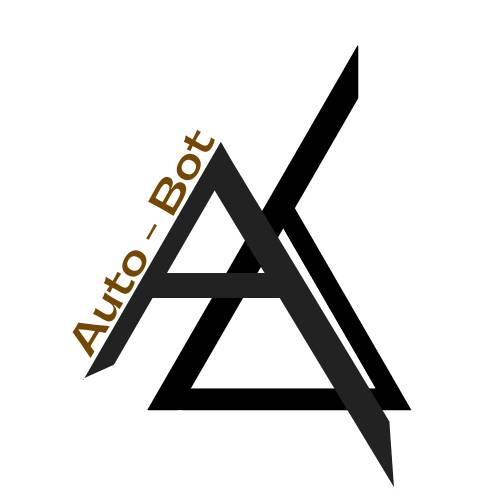
Sponsor: Jeff Stevens
Student Team: Preston Enriquez, Rigoberto Cerda, Daniel Alonso, Alex Quijano
Faculty Sponsor: Dr. Larry larson
Our product is a small 2-wheel drive autonomous vehicle that is designed to perform a variety of different tasks. This includes the ability to traverse down a hallway, detect a wooden block, and compete in a Sumo Match tournament against other robo teams. In order to ensure success in all tasks, the base components of our robo-car will be using an Esp32 microcontroller. This controller will then interface with multiple components such as a motor driver, time of flight and IR sensors.
E2.09 Project M.A.R.U
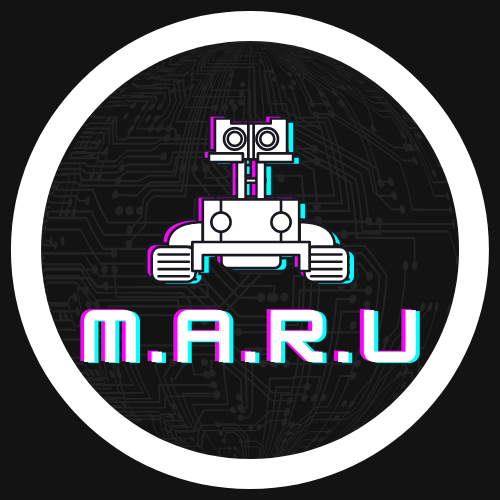
Sponsor: Mr. Jeff Stevens
Student Team: Jordan Severinson, Ezequiel Gardea, Alejandro Longoria, Andres Saldivar
Faculty Advisor: Mr. Lee Hinkle
Our project showcases a small autonomous Robo-Car that is designed to navigate a variety of competitive scenarios. The Robo-Car will use a variety of sensors to detect a block or another Robo-car and push it out of a sumo ring while avoiding the boundary of the ring. The Robo-Car will traverse a designated course without human intervention. This project could benefit school districts’ science and engineering programs by giving them hands-on experience to create their own Robo-Car and develop a good foundation of robotics.
E2.10 Sumo Bot Team D
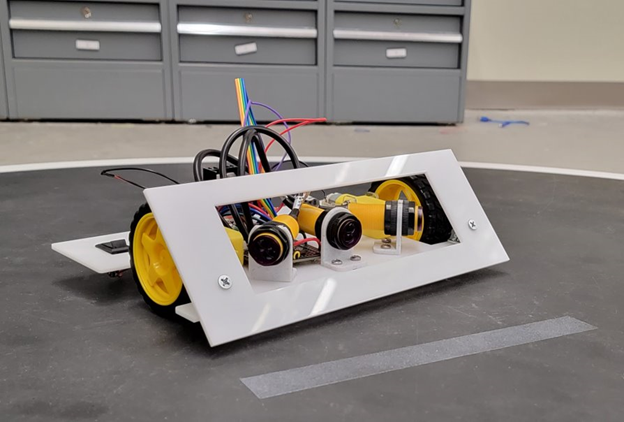
Sponsor: Mr. Jeff Stevens
Student Team: Sean Baker, Ringtarih Tamfu, Christopher Escobar, Christian Cisneros
Faculty Advisor: Mr. Mark Welker
Our project is an autonomous robot for use in sumo style competitions. Using a variety of sensors connected to a microcontroller the robot is able to search for opponents, engage them in the ring, and avoid falling off the outside boundaries.